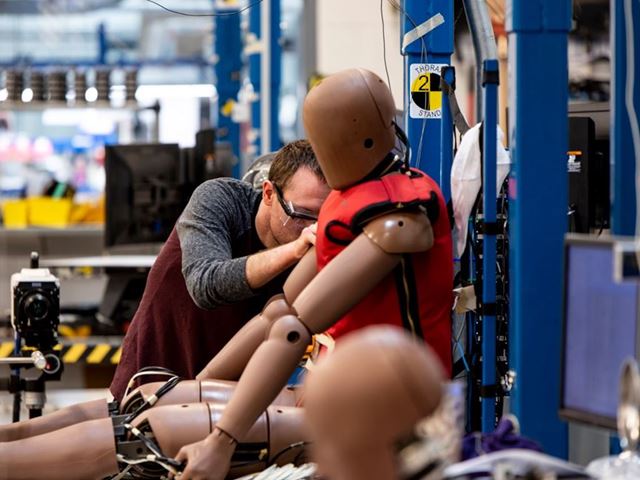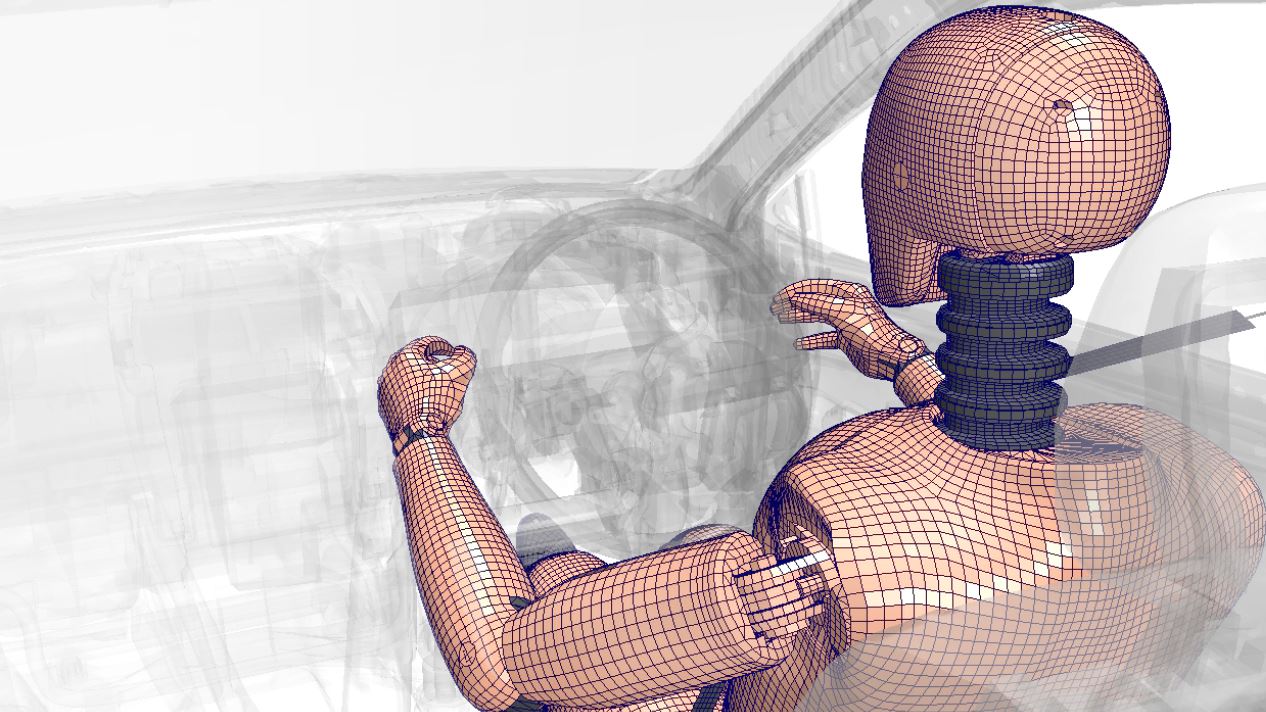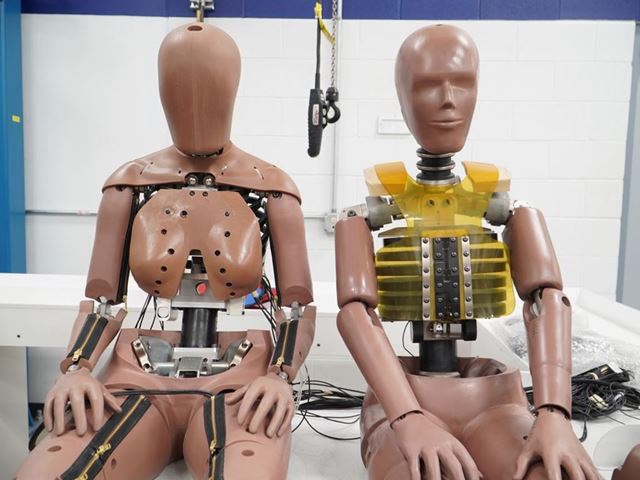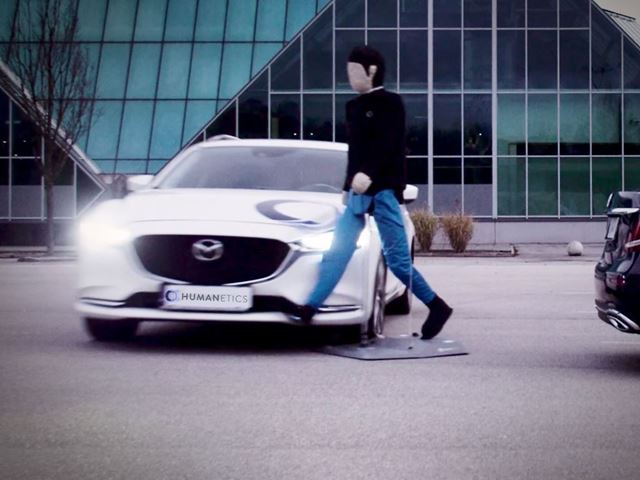
- Latest: Welcome to Auto Futures - Mobility News, Features, Exclusives and More...
- Latest: Honda to Invest $11 Billion in EV Supply System & Capability in Canada
- Latest: CATL Unveils Shenxing PLUS, Enabling 1,000-km Range and Superfast Charging
- Latest: Mercedes-Benz Announces In-car Gaming Cooperation With Tencent & Electronic Arts
- Latest: LG Chem & Factorial Announce Plans to Develop Solid-State Batteries
- Latest: The Rise of the Humanoid Robots (and how OEMS can Benefit) - Apptronik's CCO
"The Future of Automotive Safety Where Computer Simulation Takes the Wheel" - Humanetics' CEO
Adrian Smith
- Mar 19 2024

The history of Humanetics goes back to the 1950s, when Samuel Alderson created the very first crash test dummy. It was designed to test aircraft safety gear, like ejection seats and helmets. Transitioning to the 1960s, the company that would become Humanetics started developing automotive test dummies.
"Humanetics is radically different today. Nearly half of our business now relates to digital technologies, simulation software, finite element models and human body models," Humanetics CEO and President, Christopher O’Connor, tells Auto Futures.
Despite the advancements in safety features over the last 70 years, car accidents remain a leading cause of fatalities and serious injury. The latest National Highway Traffic Safety Administration (NHTSA) estimates show there are still 42,795 road deaths every year in the US.
The Michigan-based company has placed protecting humans at its heart. It is structured into three divisions - Safety, Digital and Sensors.
"Humanetics is now positioned at mission critical intersections of the physical and digital world. For example, our sensors capture data from the occupants in crashing vehicles (the physical world). This data is then used for computer simulation with digital twins (the digital world), which will inform our customers how to improve design and optimize how assets are managed and controlled (the physical world)."
Crash test dummies - or Anthropometric Test Devices (ATDs) - are used to measure human injury potential in vehicle crashes. Humanetics' range of ATDs represent male, female and child anatomies.
"They 'take one for the team' so that the team doesn’t have to. They are incredibly sophisticated pieces of engineering that take many years to develop. They have the same biofidelity (anthropometry and kinematics) as human occupants and are instrumented with sensors that measure the crash impact across different parts of the body," explains O’Connor.
The data generated from ATDs is used by engineers to improve design and reduce injury risk in a crash.
"These extraordinary devices have significantly contributed to advancing safety standards in the automotive and aerospace sectors by enabling vehicle manufacturers and safety agencies to conduct controlled tests that mirror real-world collisions. By doing this, we gain valuable insights into how the human body reacts to crash forces and the specific areas of impact," he adds.

Virtual Crash Testing
Humanetics Digital creates data models and simulation software designed to improve testing and inform decision making.
"Virtual crash testing and digitization is like stepping into the future of automotive safety where computer simulation takes the wheel. We use computer models of vehicles and crash test dummies to recreate a crash scenario without smashing metal. Simulation is a powerful tool in testing vehicle safety and ensuring that every component, from the structure to airbags and seat belts, is up to par."
"With the rise of digitalization, this virtual approach allows us to assess safety early in the design phase, leading to more precise and faster product development. It's like having a crystal ball for vehicle safety, guiding us towards creating safer cars before they even hit the road," says O'Connor.
Another benefit of virtual crash testing is that researchers and engineers can simulate a wider range of crash scenarios, including those that may not be feasible or safe to test using physical crash test dummies.
"Notably, they can use virtual versions of body sizes that don’t yet exist in the physical test dummy world. Crash parameters can be modified easily in the virtual world to evaluate different safety features, such as changes to the vehicle structure or restraint systems. Increased use of simulation will lead to more accurate risk assessments, faster time to market and improved safety design."

Improving Road Safety
RAMSIS is Humanetics' 3D CAD manikin that enables the generation of any target group, to define size, gender, population and age-specific characteristics, and model them in 3D. It can realistically simulate vehicle occupants and analyze the ergonomics of interiors.
"Every human is unique. And in crash safety and vehicle comfort, car makers want to test their vehicles with different types of occupants to ensure that no matter your size - large or thin, tall or small – the vehicle can be controlled comfortably and safely. With that notion in mind, RAMSIS software combines real 3D populations based on the world’s largest anthropometric database with precise ergonomic functionality," says O'Connor.
"This incredible software automatically calculates posture and movement models and role-specific postures based on the vehicle interior. Thanks to state-of-the-art posture studies, the virtual test humans behave realistically when sitting, standing, or performing tasks. RAMSIS is also based on data from field studies on movement behavior in vehicles, in interiors and on the operation of elements in the vehicle."
Humanetics is working with Mcity in Michigan, which is a hub for research, development and deployment of next-generation mobility innovations. They are collaborating to drive innovation in transportation safety, efficiency and accessibility at a local, regional and national level.
"Teaming up with Mcity is about being part of something bigger that is shaping the future of how we move around. Our partnership gives Mcity access to our leading-edge testing tools, like our active safety robotic platforms and driving robots, to jointly develop even more advanced software and robots for new mobility applications, including the deployment of connected and automated vehicle technologies," says O'Connor.
In a press release, Mcity Managing Director, Greg McGuire, comments: “The most critical part of testing automated systems is safely dealing with other people on the roads – in cars, trucks, buses, on bikes, etc., – and how they use our road network. That’s what Humanetics is good at and that’s where we need to be innovative as a state and as a country if we’re going to improve road safety more broadly."

Creating A Safety Testing Ecosystem
Many autonomous driving developers believe going driverless is the way forward for safer transportation. But, O'Connor states: "No one tool or technology can help us achieve zero fatalities."
"Seat belt usage and driving slower, without distraction or alcohol, are key factors. Ensuring vehicles are tested to protect a diverse range of occupants, pedestrians and road scenarios is a key factor. Designing road systems and autonomous safety systems will also be key factors. It will take many decades before the benefits from autonomous technology will be seen," he adds.
"We first have to combat the increasing weight and size of vehicles which is contributing to the highest ever death rate on US roads. At the present time, we can make an immediate impact by protecting all occupants equally (not just men) and focusing our efforts on improving crash outcomes for more vulnerable occupants , such as women, the elderly and larger weight people."
Finally, we asked O’Connor what automotive safety will look like by the end of the decade.
"Imagine advanced pre-collision technology to prevent crashes and adaptive safety protection calibrated to protect each occupant. These innovations are not just concepts; they're becoming a reality -- shaping a future where accidents are minimized, injuries are reduced and lives are saved on the road every day. However, these new technologies are also causing driver distractions and have not prevented as many deaths or accidents as advertised," he says.
"In fact, fatality rates in the US are up 30% in the past 10 years in spite of the increase in active safety features. Therefore, we need to expedite the advance of passive safety which has been delayed in the same number of years to address vulnerable occupants."
"Our goal at Humanetics is to create a comprehensive and interconnected safety testing ecosystem that aligns with the technology roadmaps and vision around cutting-edge autonomy, connected vehicles, advanced driver assistance systems, adaptive systems like smart seat belts, virtual human and dummy models, as well as physical passive safety tools," concludes O’Connor.
Popular Categories
